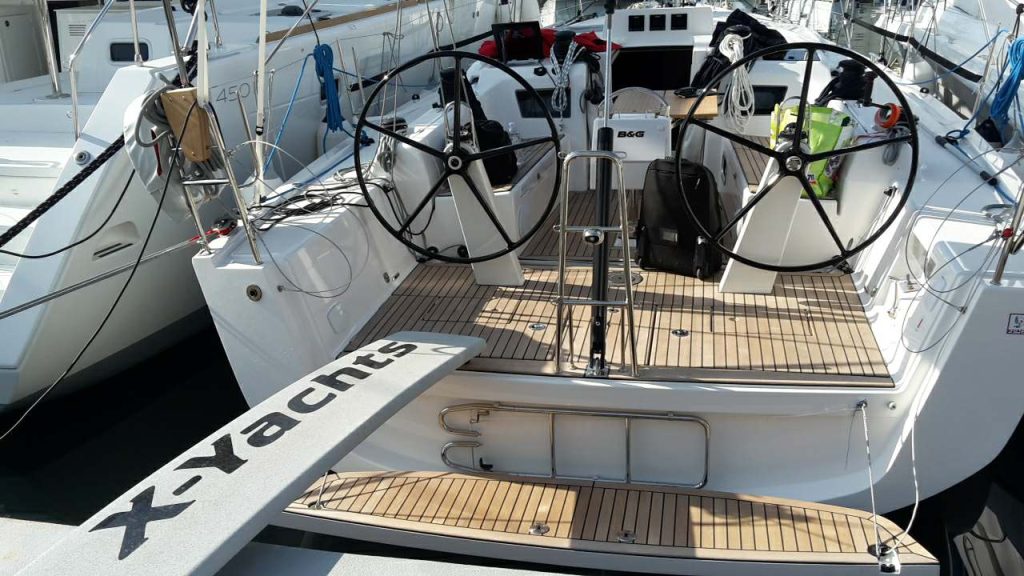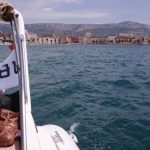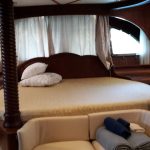From the 19th – 20th April 2018, we attended the sailing training program aboard the incredible X Yachts, with Nava Boats.
Last week I was fortunate enough to attend the sailing training program organised by Nava Boats aboard their brand-new X Yachts. As of May 2017, Nava Boats signed an exclusive-dealer contract with X Yachts, and 2018 will be the first year that they are offered in charter. X Yachts are renowned for their innovation, craftsmanship and performance; the X43 is the second model in a new range and are perfect for charter as they have been set up in a racing configuration but the design has all of the space and comfort charterers appreciate.
The X Yachts are an exciting new step for charter and experienced skippers which is why, Nava Boats is also offering sailing/skipper training aboard these beauties. Bear in mind, a brand-new X Yacht costs upwards of €300,000 and Nava are offering the incredible opportunity to train aboard them!
So, when I was invited to experience Nava’s training firsthand, I jumped at the chance – first of all, to see the X Yacht in action but also to learn more about sailing and skippering a performance yacht. Unfortunately, I missed the first day, but joined for the remaining two days.
I arrived on Thursday morning to the Nava base in ACI Marina at 9 am and was greeted by a friendly face – Alenka Alujević, one of Nava’s long-time employees and passionate sailors who I met on the Adriatic Lagoon Regatta last year. I boarded the gorgeous X Yacht – ‘Xenia’ and met the rest of the crew (trainees) – Daniel, Rudi, Ivo, and our skipper/instructor Mario Kundih.
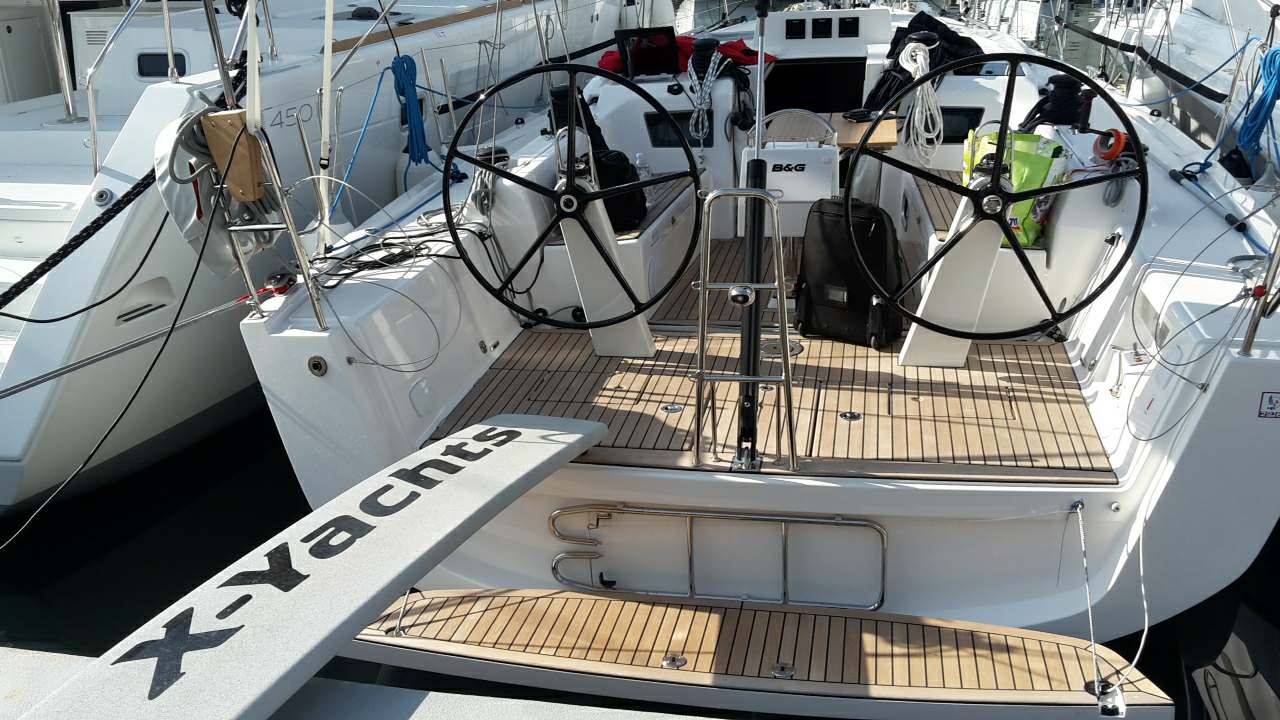
Before we got started, Mario did a full tour of the yacht with me and explained some of the basics that they had gone over the day before. The ethos of the program is more targeted at improving sailing and skipper skills of those who already have some experience, and the program was set-up to cover:
- Basic theory (parts of the ship and terminology, basic points of sailing, meteorology – wind, compass rose)
- Docking and casting off in ports and marina with manoeuvres in tight places
- Using the wheel effect
- Docking lengthwise
- Anchor manoeuvres under engine power and sail
- Docking under sail and buoy
- Tacking and gybing
- Safety at sea, MOB, reefing sails, avoiding collisions at sea
- Basic knots
- Practical navigation and night sailing
If this seems like a mouthful and a lot to cover in 3 days, you wouldn’t be half-wrong, which is why some basic knowledge and experience of sailing is recommended – you will get more out of the training if you have some knowledge but it is not a prerequisite. The fact is, I have been at sea for 5 years now, but have always been on 100 – 150 ft gulets and done very little actual sailing; so, while I had a basic knowledge, this was all still very new to me.
Practical Navigation
After orientation and a brief by Mario, our first task was to plot our route on the chart, calculating distance and time needed, allowing for variations. These days it is easy to plot a route into the Nav, however, Mario stressed the importance of understanding and being able to plot routes manually, he also gave a very simple trick to using the wind rose while doing this. After a slight confusion over nautical miles, the gents plotted our course to Maslinica bay on island Šolta.
Unpacking and packing the gennaker sail
Following this, it was time to check the gennaker. During charter, a gennaker is an extra cost and is normally packed in a sock which makes it easier for those with less experience.
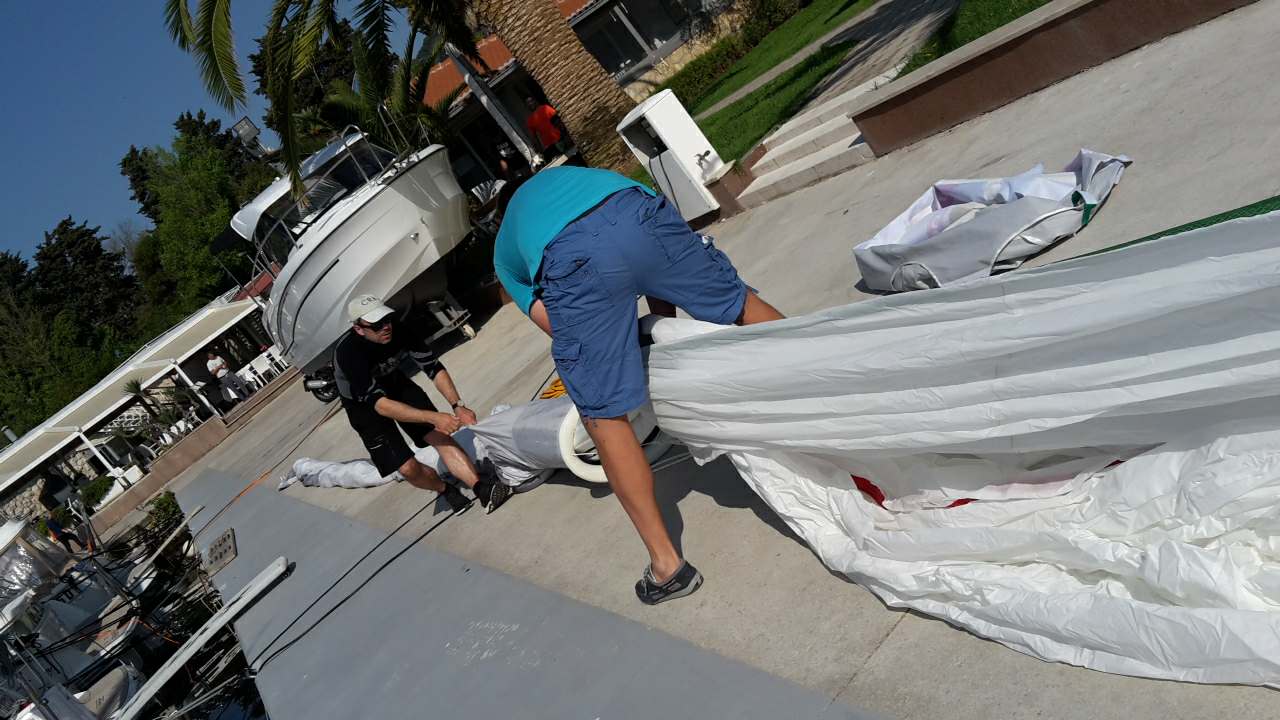
However, just like learning to work with charts, Mario’s philosophy is that everyone should know how to unpack and pack a gennaker. So, this was our next lesson – packing the gennaker, so it would be ready to use while sailing, just as you would in a race scenario.
Casting off and sailing out of ports and marinas
Casting off is essentially easy to those with some experience, but Mario never took anything for granted and had a way of pointing out tips and things to look out for; he explained that it is many of the ‘simple’ tasks which are often done wrong by charterers. For example, confirming that all lines are free and not in the water, checking other mooring lines around to ensure you don’t get caught, releasing the windward lines last (as opposed to docking). Everything was methodical and had a practical reason for the why and how, everything was also done in a calm organised manner.
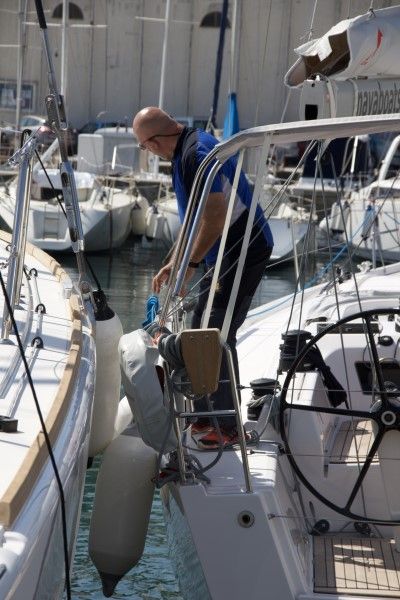
Credit: Alenka Aluejvić
Casting off and navigating out of the marina isn’t job done, we also went through the motions of putting away all of the fenders and organising the ropes and boat for sailing. This process is so second-nature to good sailors that they wouldn’t even think about it, but I really appreciated that Mario took the time to focus on these small details – because we all know, ‘the devil is in the details’.
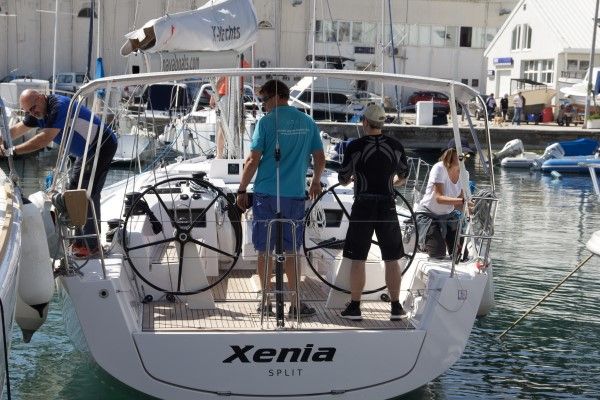
Credit: Alenka Aluejvić
Hoisting, Setting, Tacking on the Genoa and Mainsail
Before we got to any action, we went through and identified all of the ‘ropes’. Note: they are not called ropes on a boat, they are either lines, sheets or halyards. We then labelled each ‘line’ coming back to the cockpit and through the jammer to make it easier for recognition until we got used to the configuration (and lingo).
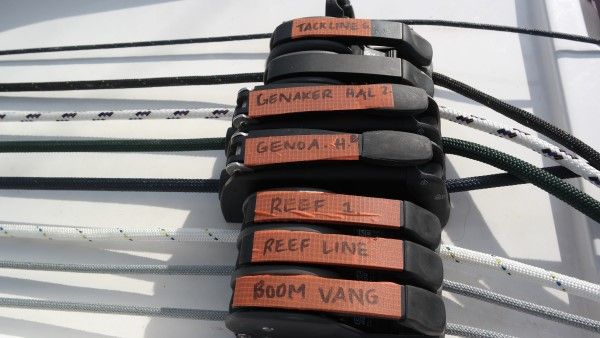
After raising the mainsail and genoa, we set a course towards Čiovo island and each took turns in different positions and ran many tacking manoeuvres. We had a pleasant 8 – 10 knots of wind, perfect for sail training. Through each movement and action, Mario was guiding and explaining why you do things in a certain manner; from reading the telltales and knowing when to trim, to how to load, ease and release the sheets/lines/halyards, correctly from the winch.
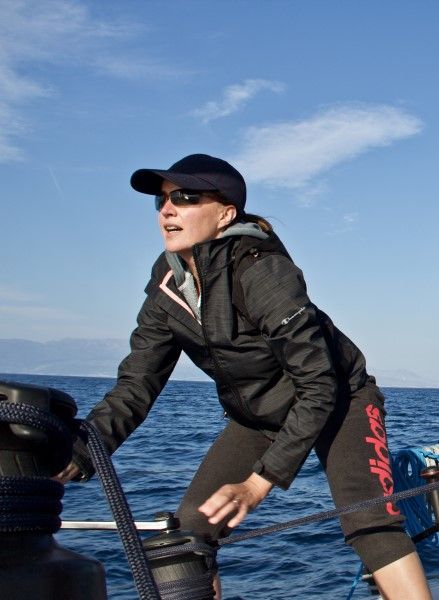
Credit: Alenka Aluejvić
These details are what I really appreciated, nothing should be taken lightly on a sailing yacht, anything can happen and injuries usually occur when basic safety is overlooked. For example, winches can hold enormous force, if you attempt to load or release line incorrectly, it is scarily easy for fingers to get trapped which could lead to breaking or even losing them.
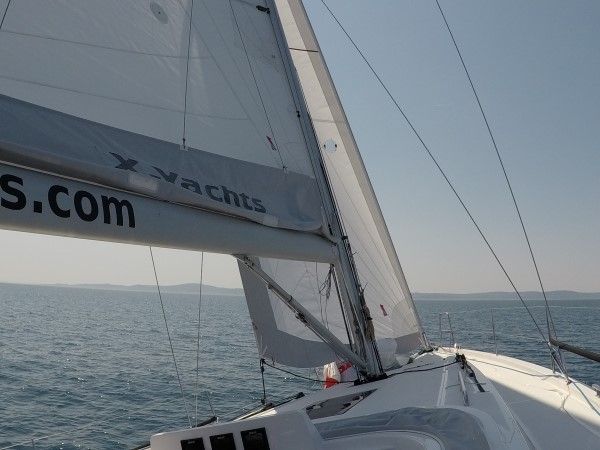
Raising and Gybing the Gennaker
Once we attached the tack of the gennaker to the bowsprit, head of the sail to the gennaker halyard and the gennaker sheets to the clew of the sail and everything, we were ready to hoist, because we had packed the gennaker ourselves, we knew that it was packed correctly with no twists in it – and yes, a lot of this terminology was new to me. Again, Mario walked us through each of these steps slowly and a number of times until everyone understood what was attached where, and why.
Heading downwind back to Split, we had a fantastic speed of around 9 knots; we took turns in each position around the boat and practised gybing with the gennaker. Now, I could write in detail about each of these sections I have mentioned so far, but am trying to keep it brief as possible because there is simply too much information to cover (hence why sailing training is essential).
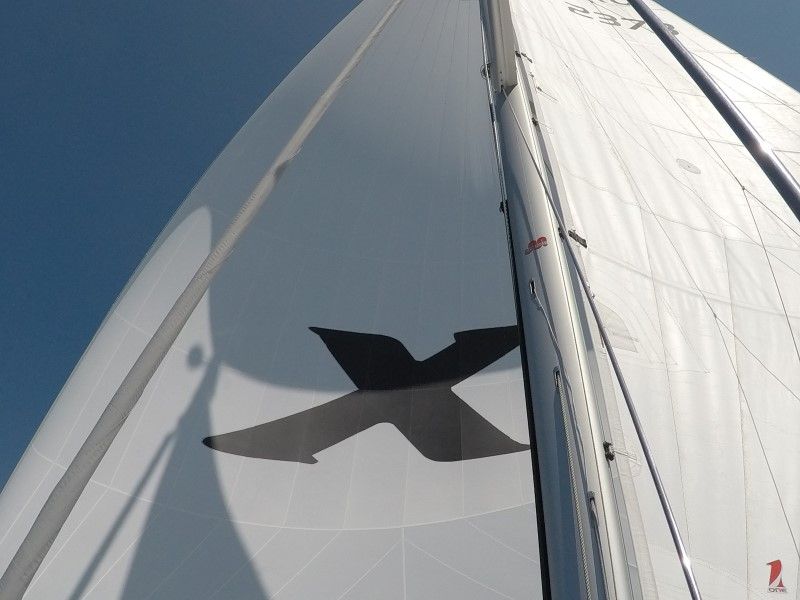
Lowering all Sails and Arriving in Port
Step by step, Mario instructed us on how to prepare for entering the marina. The gennaker was lowered and packed away nicely, main sail lowered, speed reduced (speed limit in marinas is 3 knots), fenders put out, docking lines readied; all of this was done in a calm organised manner and within plenty of time of entering the Split harbour.
Docking
This time we went through the motions of docking with Rudi on the helm, Mario again pointed out details like checking other mooring lines. We approached the berth stern-first, ready to line up and reverse into position. No anchor was dropped in this situation. Upon approach, we tied the windward line and took the mooring line to the windward bow position; Mario again stressed the importance of always tying the windward lines first in all situations. Now, the next most important thing is that docking is not complete and you are not finished until the boat is in order – all lines, sheets and halyards tied to the railings or put in their place, the boat should always be left in the condition it is found.
Sailing to island Šolta
After a quick lunch, we boarded our new friend Xenia again and started to put into practise everything we had learned through the morning – casting off, fenders away, lines/sheets/halyards in their place, course plotted to Šolta, mainsail and genoa raised and we were off…
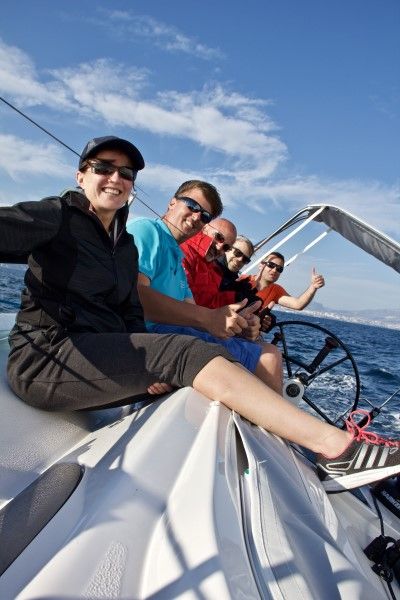
Credit: Alenka Aluejvić
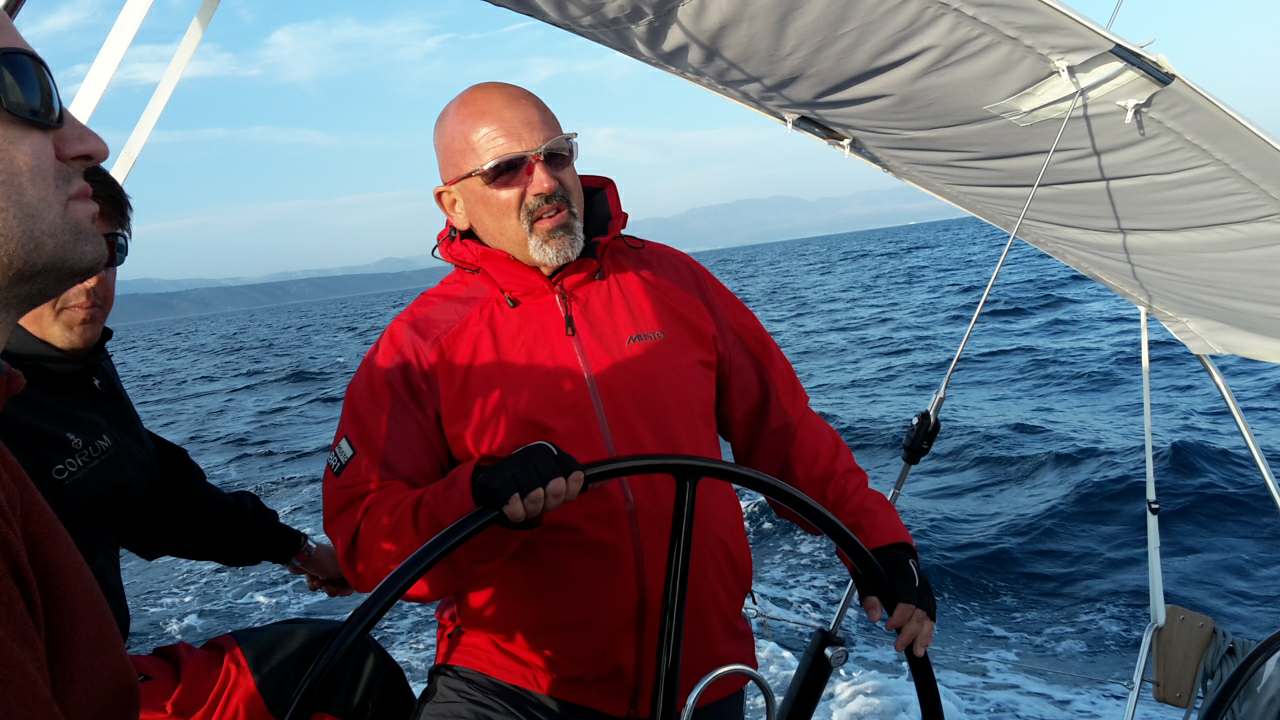
We had a beautiful 10 – 12 knot Maestral wind which took us all the way to Šolta with a few tacks in between. Navigating from late afternoon to early evening also gave us night navigation experience, as well as sailing into a gorgeous sunset and the ever-picturesque setting of Martinis Marchi in Maslinica Bay. Again, we practised our docking techniques – repetition is the key to learning after all.
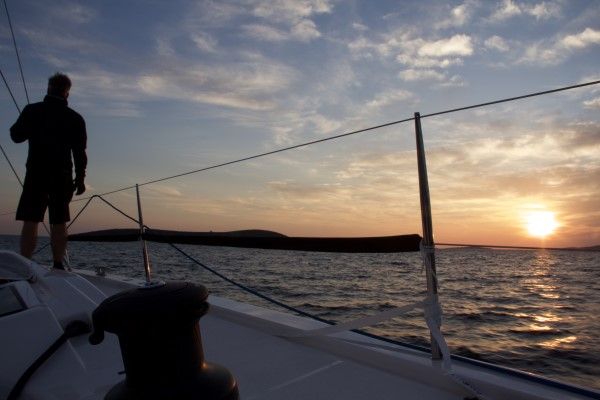
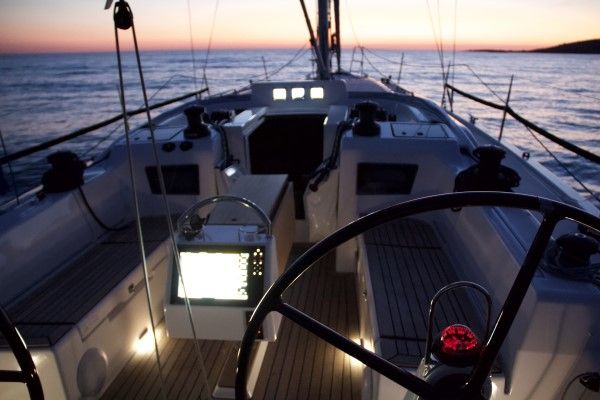
Credit: Alenka Aluejvić
The Comradery that Sailing Creates
After a long day on the water and a lot of information absorbed – new words, techniques and manoeuvres flying around our heads, it was time to relax into the evening at one of my favourite restaurants along the coast – Martinis Marchi.
I could write an entire blog about the incredible dinner we had at Martinis but I will just leave you with a few of these pics…

Handmade ravioli with truffles, lamb rack, selection of deserts.
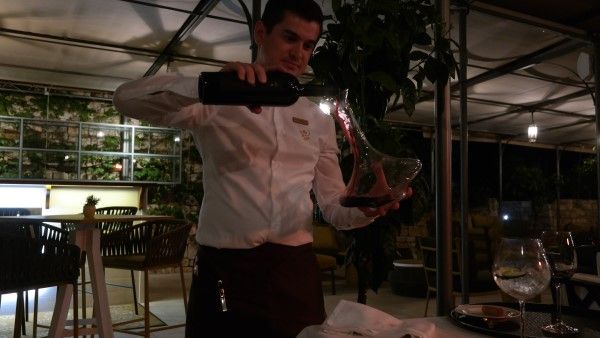
And instead, I want to turn the eye to an aspect of sailing which I have always loved – the sense of comradery that is formed at sea. Take six strangers, put them on a boat and just watch them bond. From all walks of life, all ages, genders, cultures… placing people on a boat instantly gives them a common goal – to sail the boat and preferably arrive safely to their destination. I could even see progress in one day together, how we all started off clumsy and uncertain, to successfully completing tacking and gybing manoeuvres, beginning to think ahead and working as a team to get everything done.
It should go without saying that the skipper (instructor) was 100% at the core of setting the relaxed atmosphere on board – not relaxed in the sense that he was blasé, but Mario and Alenka set the standard for a comfortable and supportive environment which is conducive to learning and put us all at ease. This energy carried through the day and I felt as if I was at dinner with a group of old friends.
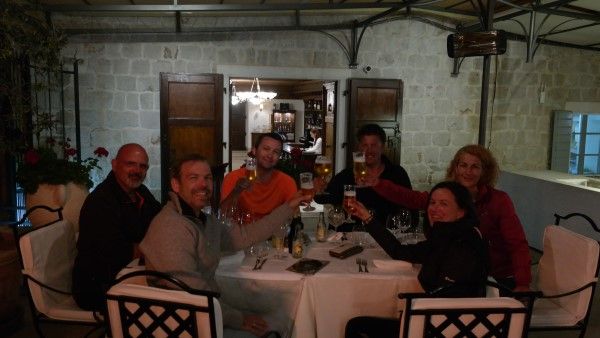
DAY 2: Docking, Anchoring, Putting it all into Practise
Thanks to it being pre-season, we had a peaceful marina and bay in Maslinica to practise docking multiple times – stern-to and lengthwise.
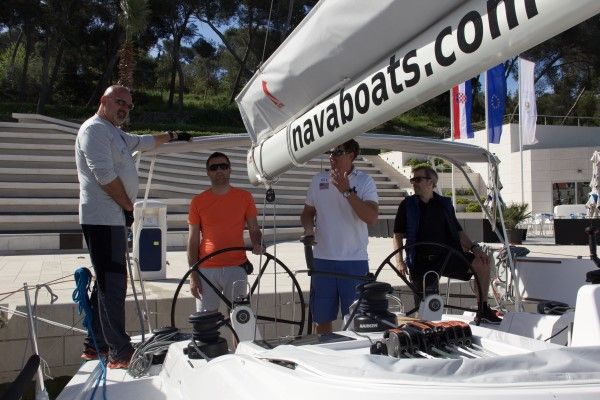
Then we moved to Rogač to practise docking lengthwise, under different conditions – with the wind coming to our bow, we practised ‘springing off’, a nice manoeuvre to easily get out of lengthwise docking in strong winds.
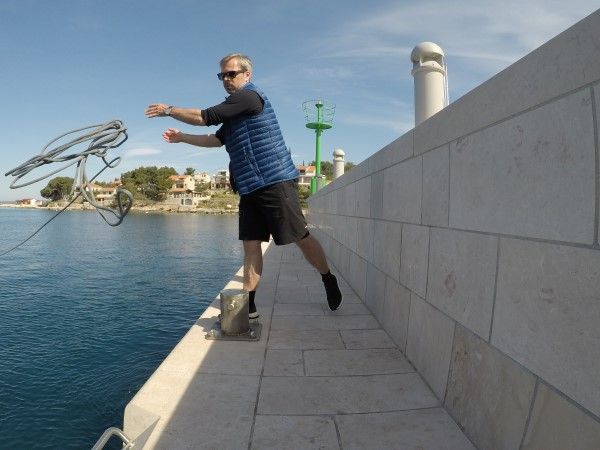
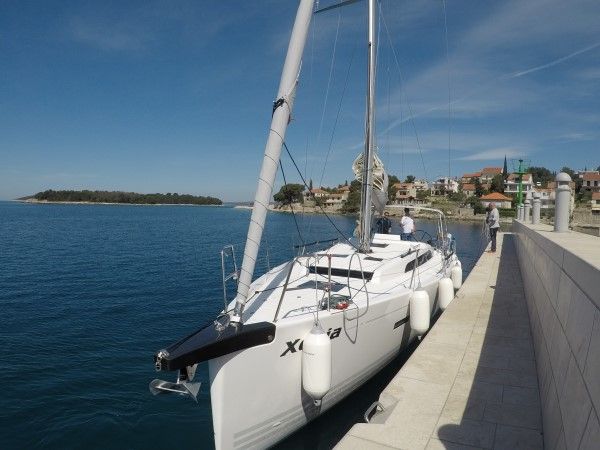
After a few attempts by everyone at this, it was time for coffee because – Dalmatia.
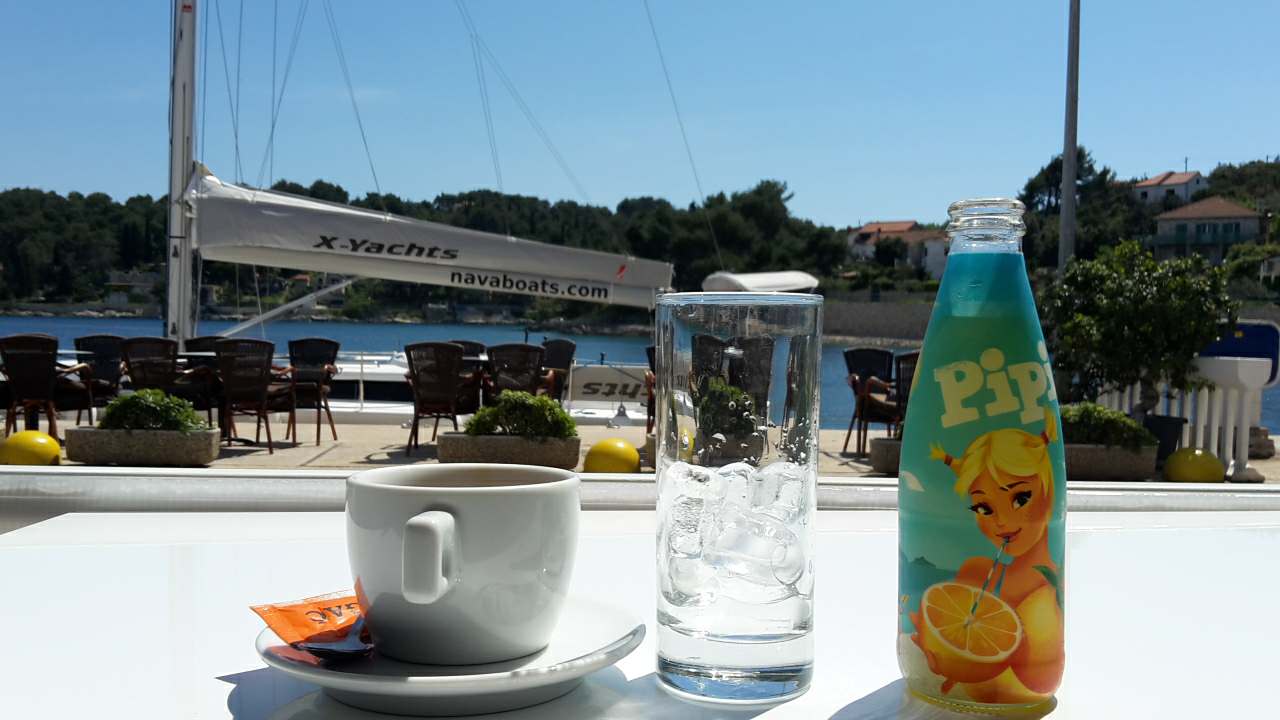
Then, we went through the basics of anchoring. When I asked Mario, what was one of the most common errors from first-time charterers or less-experienced sailors, he said it always came down to them not paying attention to the weather and thinking ahead. He said so many people get ‘caught out’ because they don’t look ahead to the night’s forecast and because of this, they don’t anchor accordingly, which can be a one-way ticket to disaster. Because Rudi and Daniel were comfortable with anchoring, we didn’t spend too much time on this, but attention was still paid to the details – ensuring the anchor gets dropped correctly, paying attention to depths, watching the chain, communicating from the bow to the helmsperson.
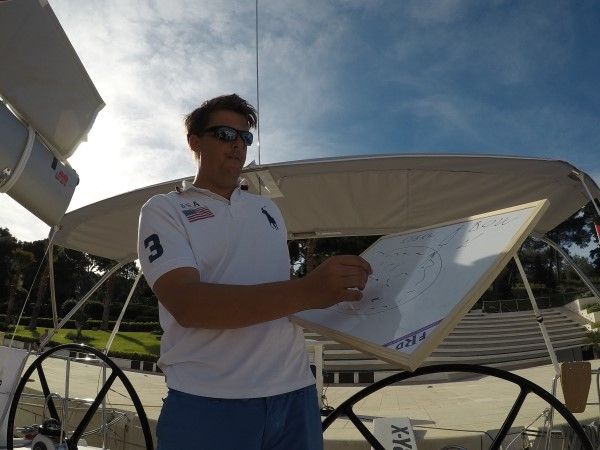
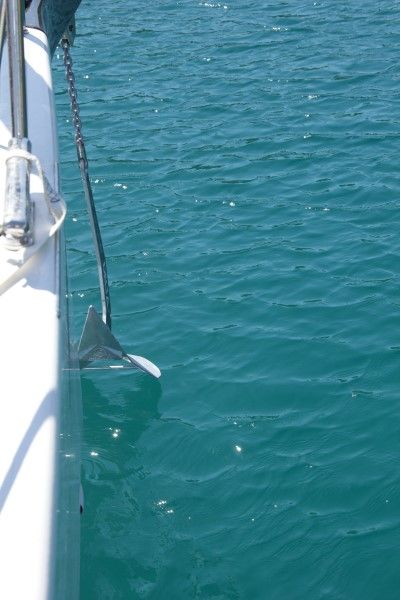
Credit: Alenka Aluejvić
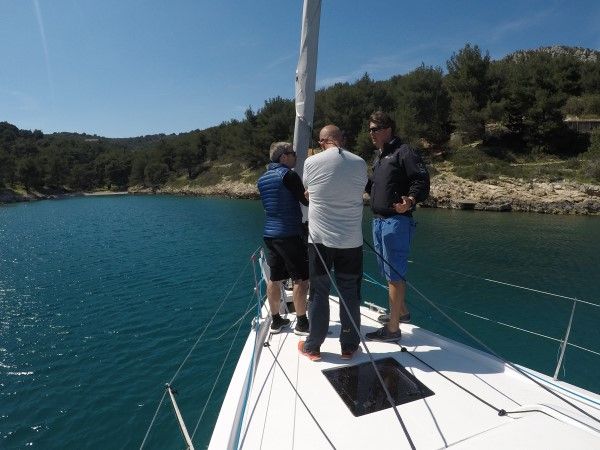
The afternoon was reserved for more sailing with the gennaker – this time we had to attach the gennaker from the fore cabin rather than its bag on-deck as we had stronger winds. By the time we returned to the Split harbour, we were gybing like pros.
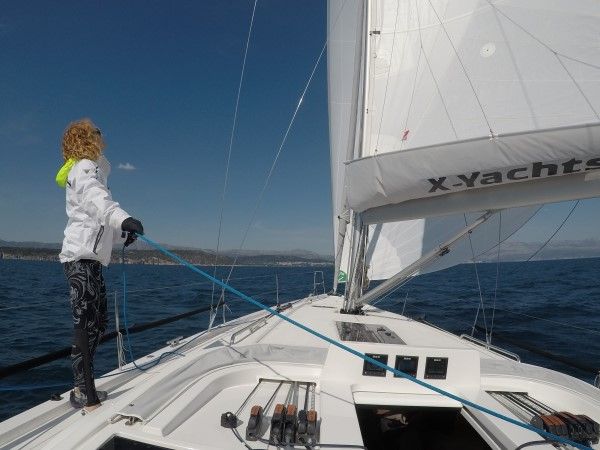
Once again, it was time to lower the sails, put out all fenders, ready the docking lines and dock. Docking in ACI Marina in front of Nautika Centar Nava, rounded off a fantastic 2 days of training and sailing.
Is this training valuable and does it suit everyone?
Two or three days is a very short space of time to learn everything there is to know about sailing but how much we covered in this timeframe is amazing. This training is absolutely valuable and to gain even more value, basic knowledge of a boat and sailing helps – because if you are starting from scratch, not knowing what bow, stern or mainsail is, it could be a little overwhelming. We had a varied skill-level in our group and everyone got immense value out of the 3 days for different reasons.
Sailing is so much more than hoisting the sails, ‘steering’ the boat and docking. Sailing is everything from organising your boat and crew, navigation, docking and anchoring safely, to understanding the physics of sailing and so much more. This article is already lengthy enough and I have barely scratched the surface of everything we learned. Every detail matters and it is typically the small details which mean the difference between an enjoyable sailing trip versus stress or even disaster.
Thinking you can charter a boat with little-to-no actual sailing experience is a fool’s notion. Even after years at sea (as a hostess on a gulet), this training and a regatta under my belt, I would not feel confident to take to the water by myself. In fact, I would be tempted to do this course again to really solidify all of the information from last week.
Do I recommend this training course?
I highly recommend this sailing training with Nava Boats aboard X Yachts. I learned so much, the course is well set out, our instructor Mario is one of the calmest persons I have met, his style and demeanour made it very easy to learn; he put emphasis where needed but no moment ever felt stressed or tense. Having dealt with Nava on a few occasions now, I can say that I have only ever been impressed by their overall professionalism and passion for what they do – Mario and Alenka are a shining example of this. Anyone doing a sailing training with Nava Boats will not be disappointed.
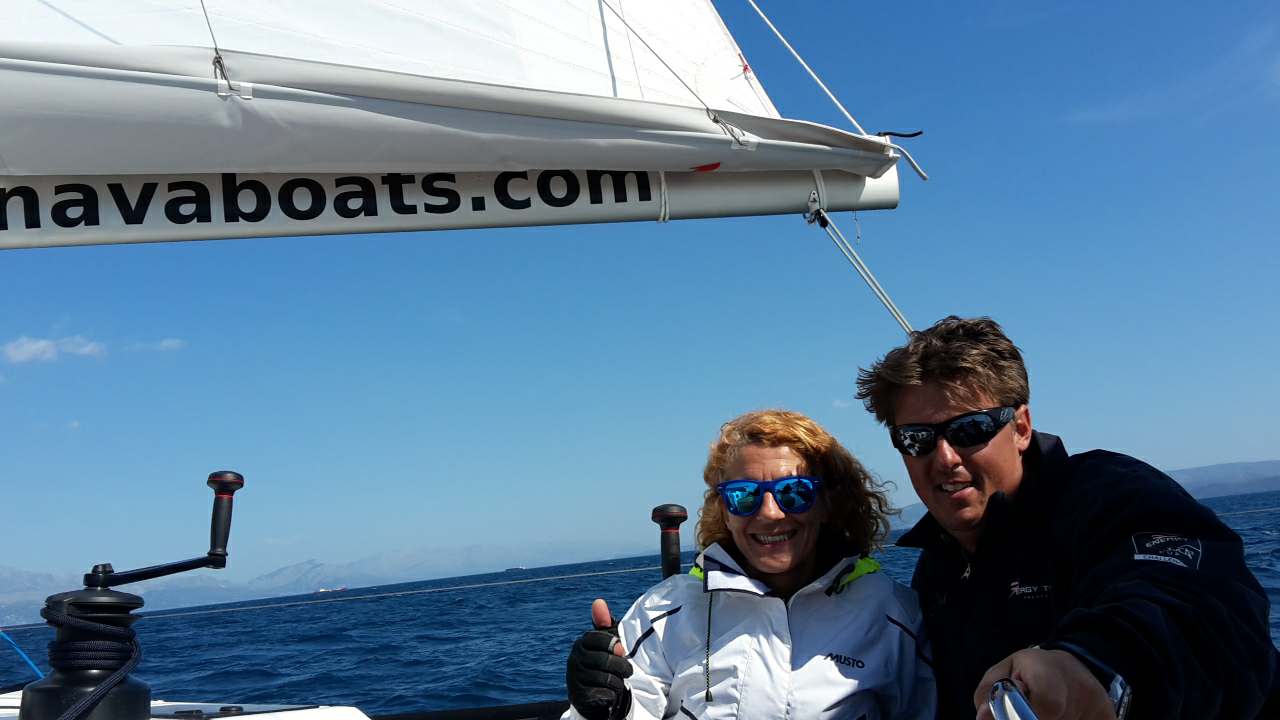
Alenka Alujević and Mario Kundih
Throughout this, I have barely even had a chance to mention just how incredible the X Yacht is, it handles like a dream and is very well laid out and designed; having the opportunity to sail on the X Yacht was a treat in itself. As well as basic training, anyone looking to improve their skills on a performance yacht, particularly in aid of regattas, this program is perfect and any passionate sailors looking to charter this year, should definitely turn their gaze to these X-beauties.
Overall a 10/10 experience, I couldn’t fault one aspect even if I tried.
If you are interested in a sailing training on the X Yachts, you can find more information here, or if you are interested in chartering an X Yacht this season, you can find charter information on Nava’s website here.

